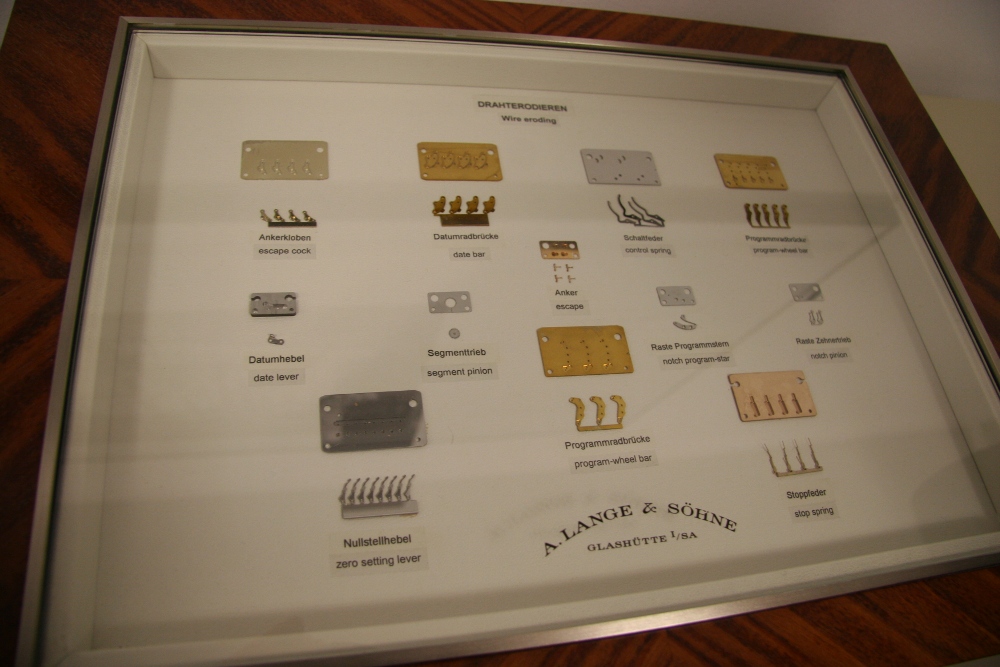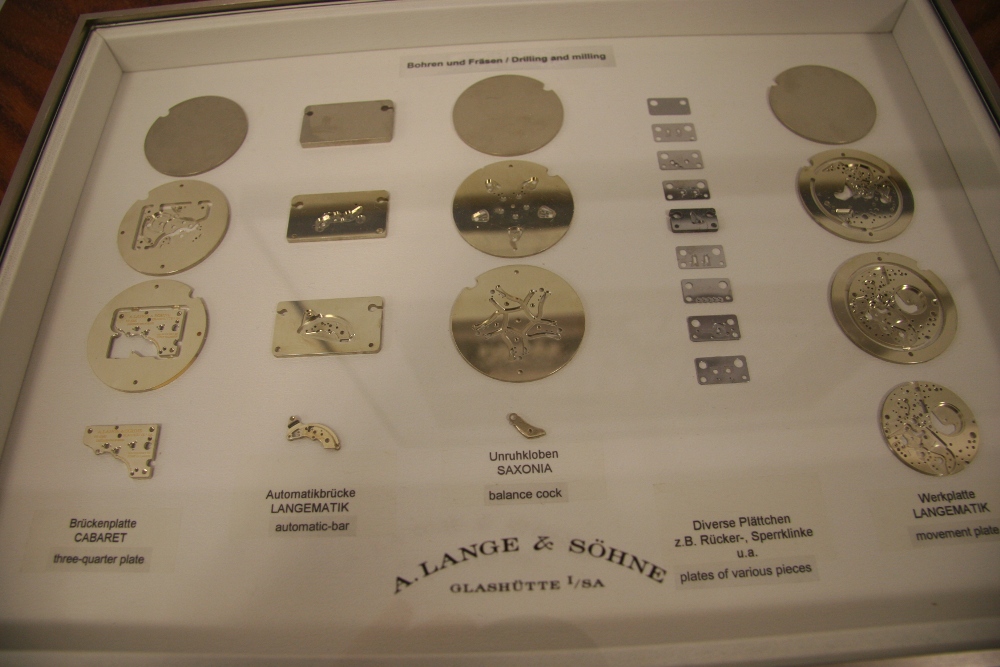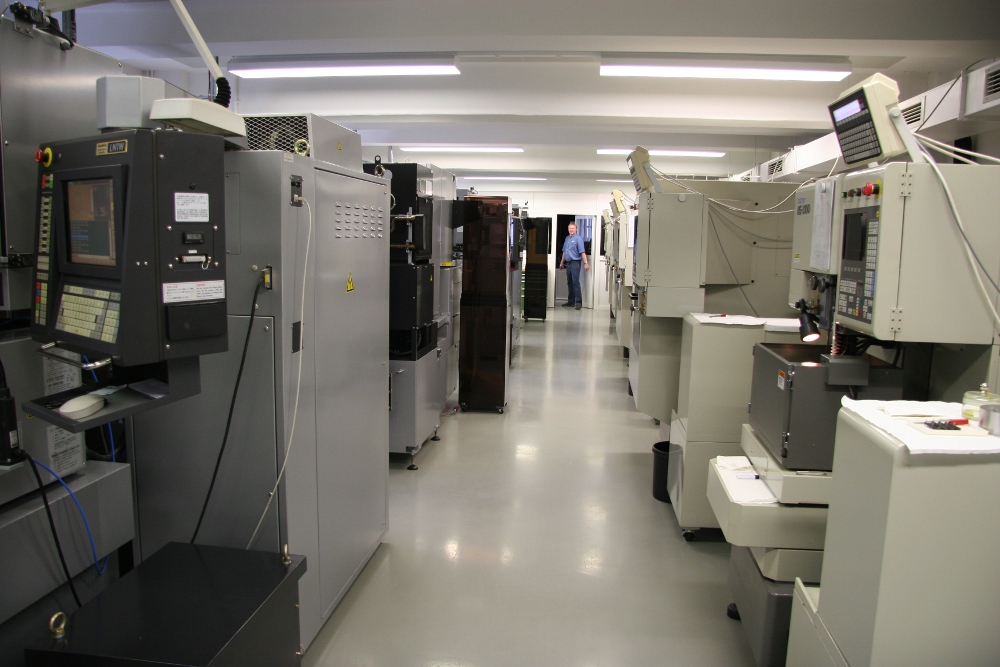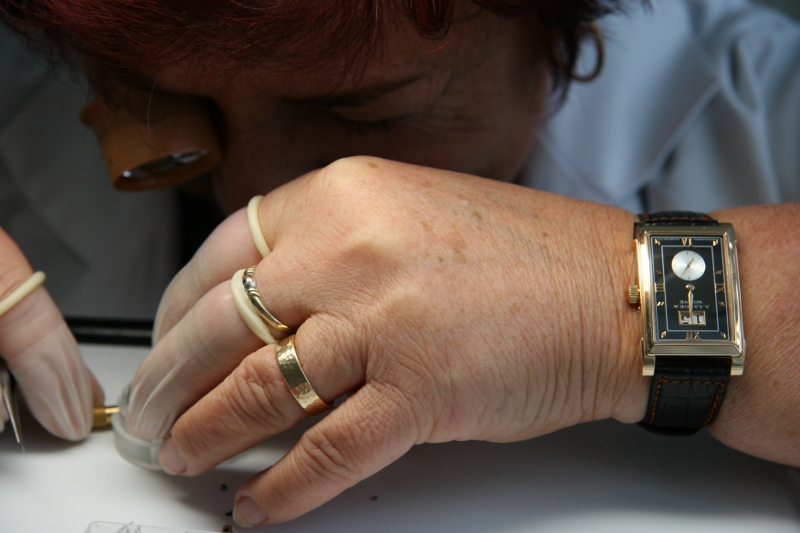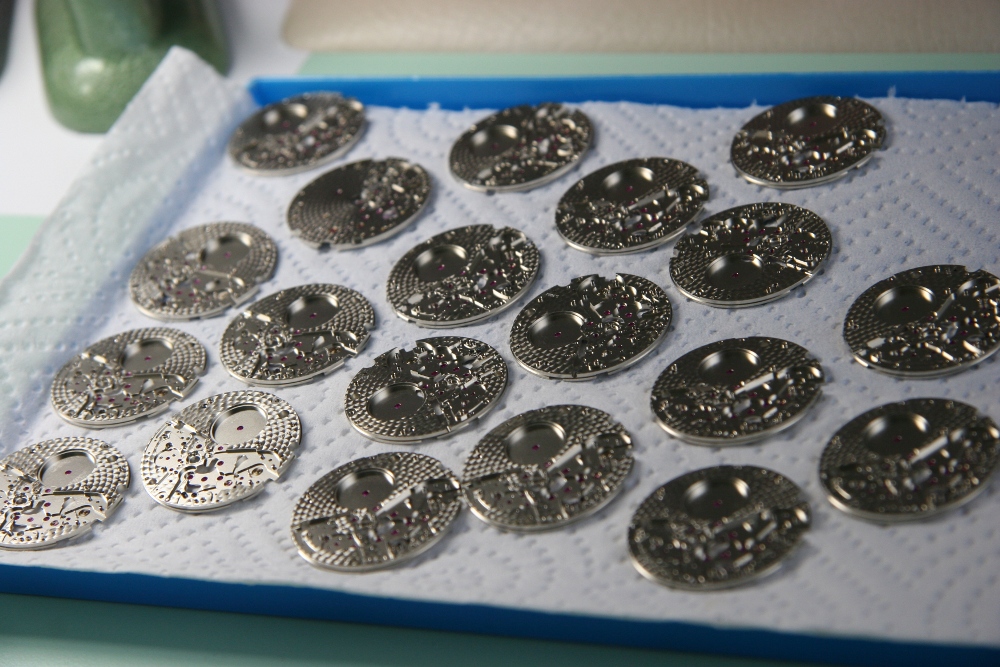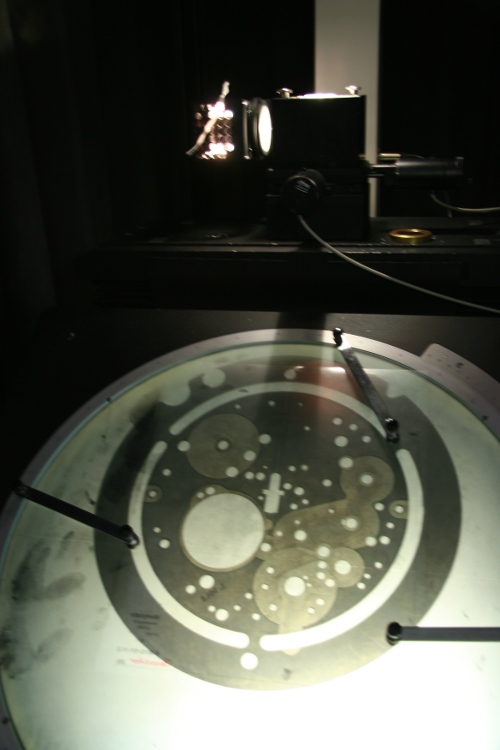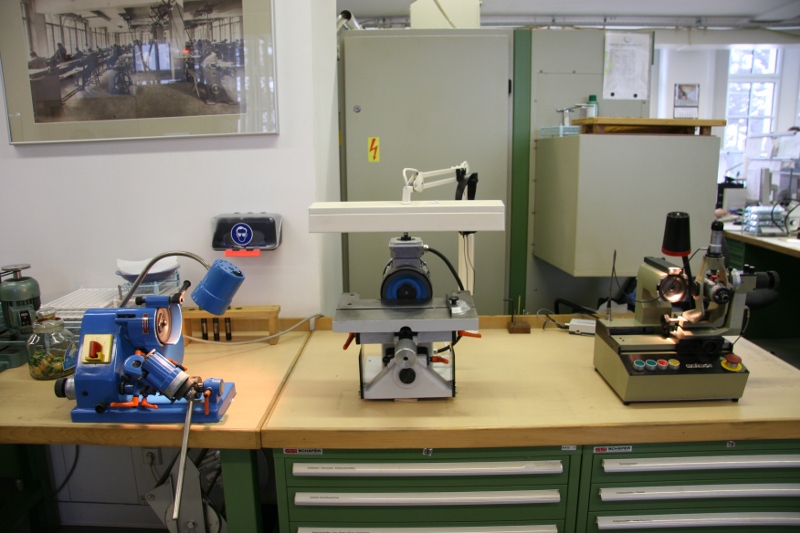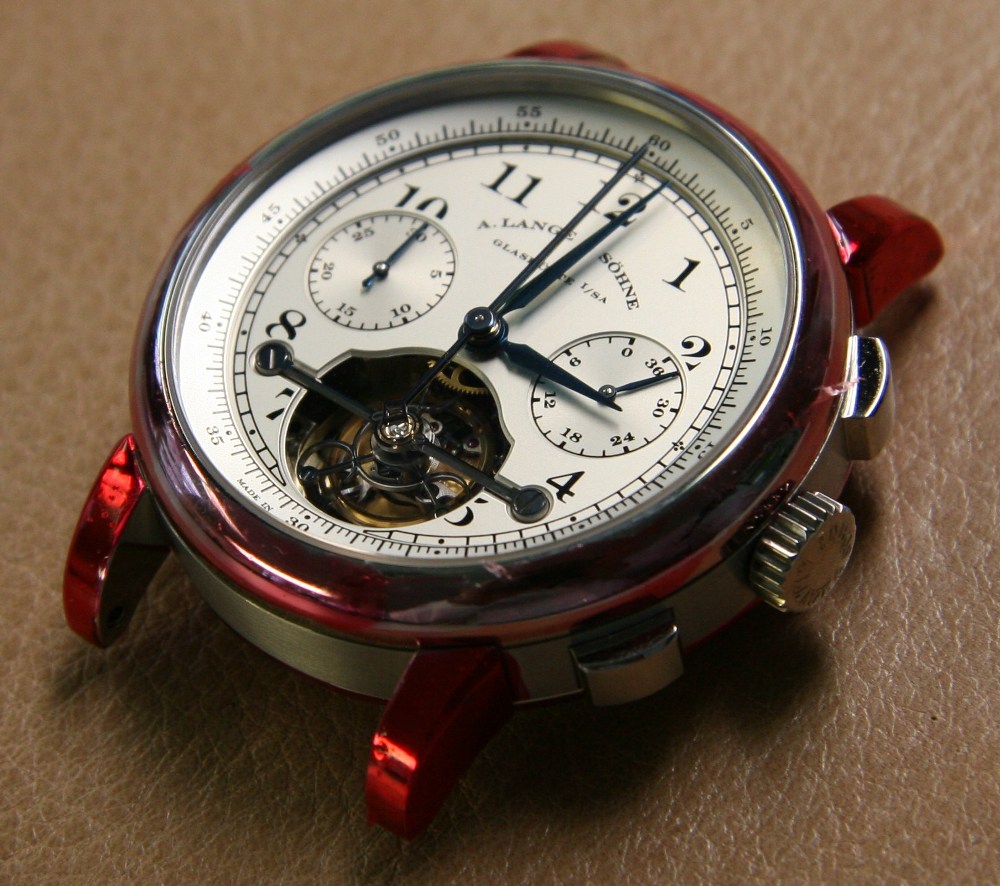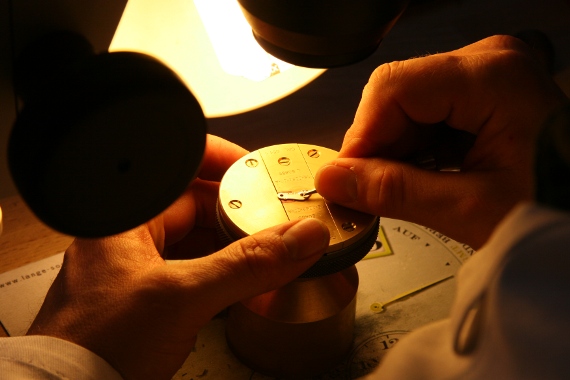
Mysteries are things you can’t unravel in your mind. Knowledge of origin is key to dispelling an enigma, and the pathway to appreciation. You can’t have passion for something you don’t really understand. I began my love of watches ignorant of what went into making most watches. True timepiece appreciation can only come when you really know what goes into constructing watches. It gives you the ability to evaluate the high quality from the mainstream, and foresight to look beyond the dial.
This article is the second part of my A. Lange & Sohne Germany trip discussion. It has taken me longer to get to writing this than I would have preferred, but it has given me time to lets these facts ruminate. In the part I article covering my trip I left off talking about the history of the brand and describing the watch making region. We are ready to go into the heart of the manufacture, taking (some of) the mystery out of the end result, and impressing upon you what really goes into making the finest of German watches.
How I wish I could detail everything that goes into the manufacturing and construction of beautiful A. Lange & Sohne watches. What I have experienced, while in depth, feels like merely glimpse into the entire process. What I really saw was the major steps and processes involved in the construction, decoration, and assembly of watch movements. Realize that the entire process is high complex, regimented, and time consuming. Dozens of people can be involved in the manufacture of just one watch movement, and that is just the movement. Lange is a movement maker, which means the rest of the watches are produced by other companies to Lange’s specifications. These other parts include the case, dial, strap, and other housing elements of the watches. Lange designs and provides detailed specifications to expert providers that supply these necessary parts. For example, the available bracelet on certain Lange watches is supplied by a top jewelry maker, and are finer than most any watch bracelet you’ll ever see or wear. Companies that do make everything that goes into a watch are known to be “vertically integrated,” a status only possible with thousands upon thousands of employees (i.e. The Swatch Group). With just over 500 employees, A. Lange & Sohne sticks to what it does best.
Lange puts all its efforts into stellar watch movement design and detailed manufacturing. Would you believe that their watches average 6 -14 months to produce? I fact that I keep rattling off to people as it is hard to believe myself. I am talking about each individual watch! Basic watch making of course doesn’t require that much effort, but that isn’t the point. The idea here is to lovingly caress each watch with an enormous amount of attention and refinement. Testing, retesting, and evaluating before any watch is handed over to a customer. This is what luxury watch making is all about. Fanatical attention to detail using only the best procedures, no matter the cost. The result can be what you consider a family heirloom, this is what you pass down to other generations. There aren’t other things like this in the world, at least not very many. So when you talk about luxury German watches you aren’t just talking about a “valuable brand” or a rich helping of gold and diamonds, you are talking about how the watches are made – and that is the most important point to get out of this article.
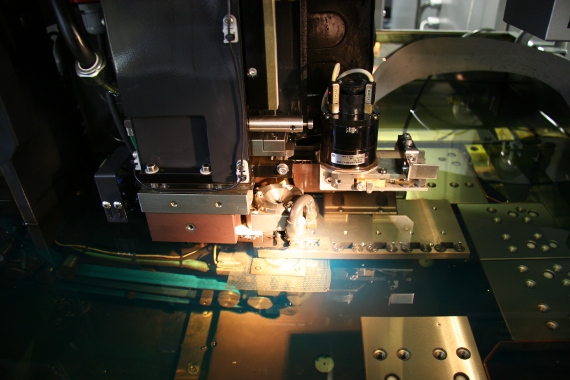
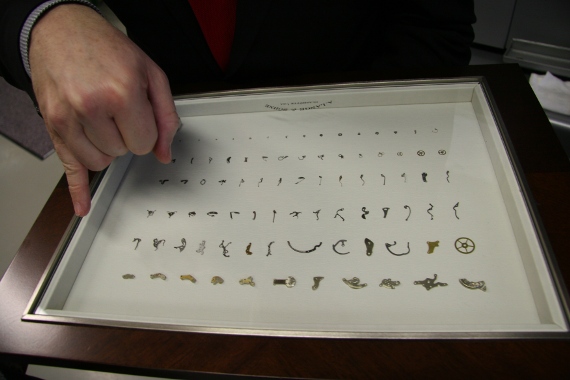
The movements all start with base materials. That material is mostly an alloy called German Silver, which does not actually contain any silver. The alloy is a mix of nickel, copper, and zinc. It is favored as being durable while workable, and because it oxidizes nicely with a slight yellow tint. The German Silver comes to Lange in round plates or little rectangles, almost everything is based on originating from these plates. If another material is needed in the movement (such as gold) it too comes in some base plate form if it is to be machined at the Lange Uhren.
Located at the manufacture are various machines that work on the plates. One such machine is the CNC (Computer Numeric Control) device. This large machine is responsible for taking the metal plates and making the famous 3/4 German watch movement plates. The machine bathes the plates in a mineral oil while drilling and cutting them based on a pre-programmed design. That programming is what is essential to the entire process. Computer and hand drawn designs are blown up and carefully scrutinized by measurement machines. When the dimensions are perfect, the movement designs are programmed into the CNC machines to be cut on into the German Silver plates. The machines have a tolerance of just 4 microns. Deviations are not acceptable, and almost never experienced. The process of making the movement plates is about as calculated and time consuming as you might expect. The machine shops look like a cross between an optician’s lab and an autoshop, but ultra clean and highly functional. Lots of white, and the hum of expensive machinery with the sweet scent of lubricating oil. No white coats just yet, you need to get further into the process for that.
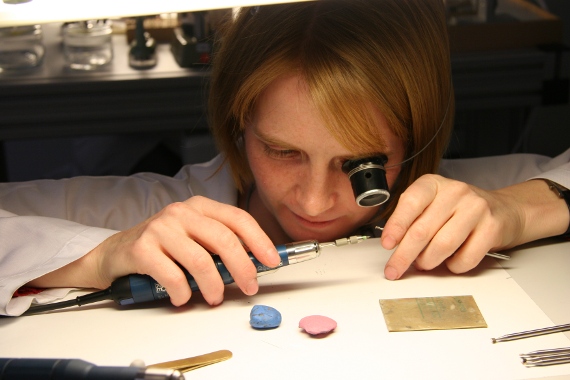
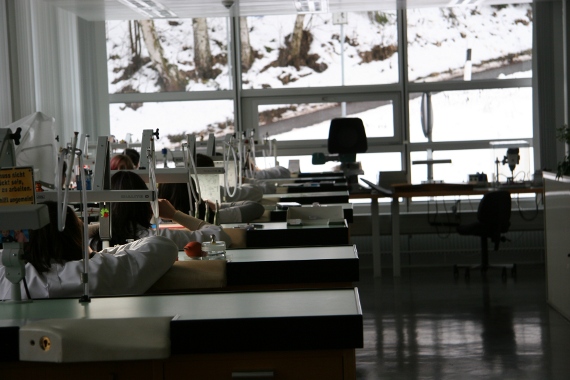
While the CNC machines work on large pieces such as the movement place with drills and alike instruments, what about the tiniest of tiny pieces that go into a watch movement? Cut by lasers? No, not really – though some watch hands are laser cut. Here a better technology is used, one that I hadn’t even heard of before. It is called “wire erosion” and the process is quite cool. Basically, the wire erosion machine takes spools of ultra thin copper wire and applies electricity to the wire to create an ultra-hot spark. That spark is what cuts the metal plates that are put into the machine resulting in the creation of tiny watch movement components that seem almost impossible to produce. Once the wire is heated up, it is oxidized and must be recycled. The machine uses small rectangular metal plates, that are stacked. Each run of the machine can process 25 or so plates. You can see the machine in operation in one of the images. It is the image with the complex looking machinery with the pool of greenish liquid. That liquid is non-conductive oil. It helps keep things cool and removes debris. It also helps the machine look impossible, and the whole plate cutting process is done as it is submerged. Underneath the machine image, you can see an image of a tray of sample parts that A. Lange & Sohne relies upon the wire erosion machine to create.
After parts which are small, tiny, and impossibly fragile looking are made, the longest part of the watch making process begins. This is the finishing and decoration phase. Where leagues of skilled workers dedicate months of time to going over virtually each part of the watch movement in extreme detail. This time is dedicated to polishing, engraving, texturing, and of course quality assuring. The bottom line is that when you pay for an A. Lange & Sohne movement, you are paying for a fanatical attention to detail, beauty, and perfection – as well as the amount of time involved in the process as each component is specially finished and/or decorate. I asked the Lange people how often mistakes were made as most of the processes are manual, and what they do with the imperfect parts. They just looked at each other and then calmly stated to me, “this does not happen.” It was confident enough an answer that I had no problems believing it. When your business is steeped in generations upon generations of a craft perfected over time (no matter the technology used) you get the point where all the kinks have been worked out, and all you have left is a seamless system.
I was particularly keen on the decoration component of the watch making phase. I looked over the shoulders of many a worker to consider their work, and the skill seemingly involved. Each worker goes through training. for some people it can take years and require special educational degrees. This is particularly true with anyone assembling movements. Work rooms are divided by specific tasks. I entered a room called “Perlage” for example, and perlage polishing is all that they did. Notice the image with the polished movement plates. They are applied with a perlage polish. While the process could be done completely automatically with a robot, Lange does not do it that way. “This way each piece that is decorated comes out just a little bit different. It is unique – and that is the way we prefer it.” I liked the response. The workers have total ownership of their work stations – and they spend as much time working on small parts as they do maintaining the machines they work on to keep them working perfectly. The rooms are clean and comfortable, and it is common to see watch makers decorate their own work stations with trinkets, images, and other person belongings. These really are homes away from home. Turn-over for these positions is very low, and a position working at A. Lange & Sohne as a watch maker is a secure and highly regarded position. Most workers will do the same task each day. Some of them are content doing this, others slowly move their way up to room leaders or other facets of the watch movement making process.
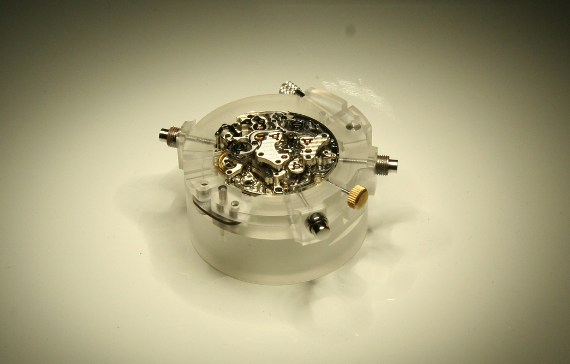
The rooms where the watch makers sit is always headed by a leader – who sits in the back. The room leader is a more senior level watch maker who is there to answer questions and over see work. These leaders are not only there to ensure that the output is as planned, but to mentor the more junior members of the team. You can see from the pictures that the rooms are neatly organized, and have large open windows as to not make anyone feel stuffy. The rooms are kept small on purpose (I saw no more than 20-30 people per room), as to enhance the level of team work and cohesion as everyone is there to focus on a common goal. It is also important to communicate what everyone is working for. One feature of this ideal was how the watch making rooms were decorated, with framed images of watch movements or pieces there of. As if saying to the people in the room, “remember what you are working for, and remember that they are treasures fit for wall decoration and to be framed.” It was a nice touch, and I thought it charming to at least see people proud of their work.
As things get more complex and watch makers actually begin to assemble the movements, you start to see workers who do everything under a microscope. In fact, a lot of modern watch making is done entirely under a microscope. I spent some time myself looking through these high quality devices and can easily say that they would be comfortable on the eye to spend day after day looking through them. Constant use of a microscope is especially necessary when working with small parts in movement assembly, as well as for the engravers (all Lange watches have a signature decorated balance wheel cock). These tasks require the most careful skill and attention to detail.
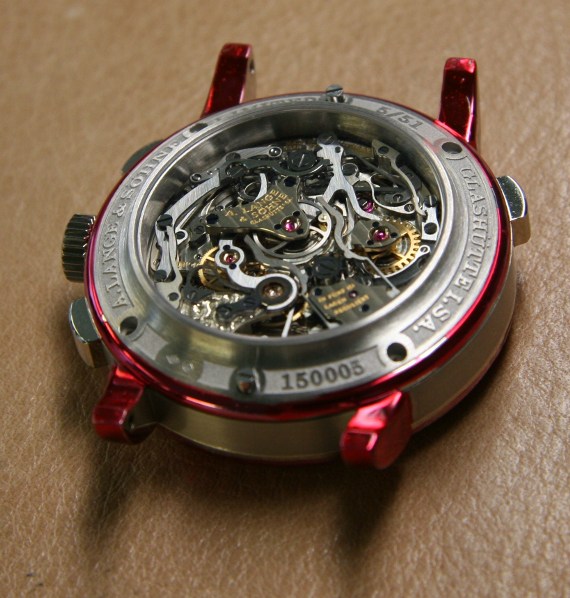
After each piece of the movement is finished, decorated, inspected, and re-inspected, the watch movements are finally assembled. One area is dedicated to putting the cases and dials together, while other people are seemingly more involved with the movements. Everything must be perfect before it is used in a final movement. Assembling a movement can take a varying degree of time. Sometimes days just to put the 100’s of pieces all together. You can see just how complex the movements are, and making sure everything is placed together in order is a careful task. Once a movement has been assembled, it goes through testing. And testing at A. Lange & Sohne is an arduous process. These tests are more than just, “does the watch work?” They don’t want to put at watch into market if there is any problem with it. Testing involves making sure the watch has good rate results (in various positions), as well as making sure the movement is free from defects that would cause it to prematurely fail. Some watches can take months just to test. One specific watch was an incredibly time consuming watch to test. This was A. Lange & Sohne special month long movement watch. The mainspring could be wound and last up to one month. This incredible watch needed to be fully wound and unwound countless times to ensure quality. Can you imagine how long this took? Lange does not care about how long, they care that it gets done right. I can’t stress enough the fact that such statements are not merely pulled from marketing language. This is actually the prevailing sentiment and practice at work in the luxury watch manufacture.
It gets a bit more time consuming after testing. I was told that once a watch has successfully been tested, the watch is then taken apart, and put back together. This is to ensure that no part of the watch was damaged or subjected to excessive stress during the testing. After the watch is reassembled (and tested again), it is finally ready for market. Though I am sure there are a ton of steps that I am missing. As I mentioned before. The typical cycle from start to market for an A. Lange & Sohne watch is 6-14 months. Considering the amount of time and labor spent on each watch, the price you’d need to spend on buying one of the watches seriously starts to feel like a bargain (think about it). What I have described to you is an simple overview – a merely abridged version of what goes on.
You should know that this article was written over a period of time starting soon after visiting the Lange watch manufacture up to a couple of months later. Stretching it out has helped me mull over the important points of the trip, as I walked away quite impressed and inspired right after the visit. There is really no sufficient amount of words or pictures I could provide to describe how watches are made, not for mainstream watches, and certainly not for luxury watches. I asked easily over 100 questions that day. Though I had 100 more, and probably 1000 interesting points I never even thought to ask but were important. This was just a small snapshot in a world of craftsmanship that is truly rare in today’s world. It is easily to complain about why we need such expensive watches when the world has so many other problems, but you would be missing the point. Is it true that certain luxury goods are simply expensive for the sake of being described “a luxury.” This really isn’t the case with Lange Uhren. They simply produce something at a very high quality that costs a lot to make. Basically this is what all real luxury items started out as – a maker of “the best” of something, not just a status symbol. So yes, it is true that the average price of a new A. Lange & Sohne watch is about 35,000 – 40,000 Euros. It is also true that in this humble watch lover’s opinion, who can earnestly not even begin to think about affording one of these timepieces, I can honestly say the price is totally worth it. If you haven’t had an opportunity to really appreciate an A. Lange & Sohne watch, even if you are familiar with the brand, I encourage you to take a close and intimate look the next time you are able to handle on of their purely German timepieces. Note that if you ask anyone at A. Lange & Sohne about how the watches or made, or to describe a feature of the watch, you are in store for a thorough and detail answer from people passionate about their brand (as they rightly should be).
Learn more about A. Lange & Sohne watches here.

